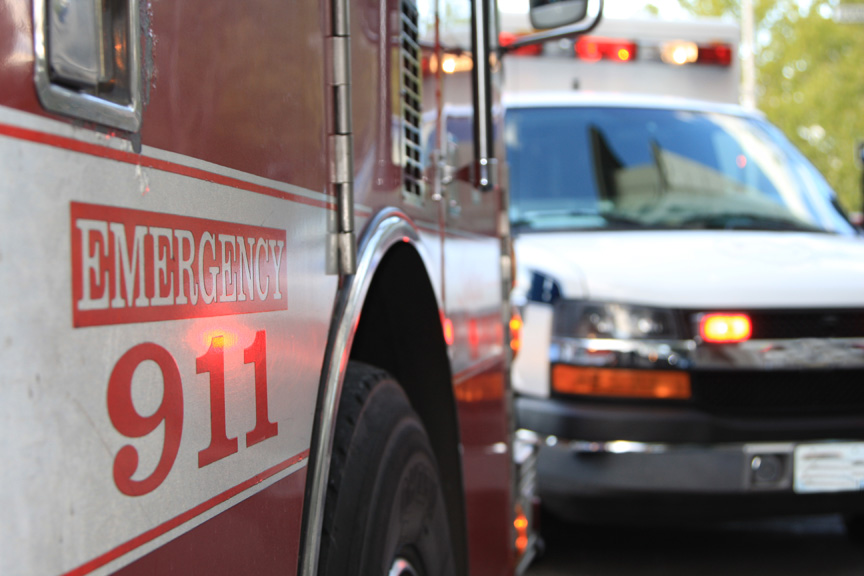- Health
- Safety
Is your child bleeding? Here's what to do before 911 arrives

In this article you’ll find answers to questions like:
1. What are the types of bleeding?
2. What’s the best way to respond?
3. Where can I learn first aid?
You already know to dial 911 if your child is badly hurt and bleeding. Are you also aware you can practice a few first-aid skills that could someday save their life from severe bleeding?
Stop the Bleed program, formed by the American College of Surgeons, is on a mission to educate the public that bleeding is the No. 1 cause of preventable death after injury. In fact, bleeding to death can happen in as little as five minutes!
The program, trademarked by the Defense Health Agency, aims to teach the techniques to control severe bleeding until paramedics arrive.
1. WHAT ARE THE TYPES OF BLEEDING?
Accidents at home or work can cause life-threatening bleeding, says David Summers, trauma nurse outreach coordinator for the Health Care District of Palm Beach County. It’s vital to stop the three types of bleeding: oozing, flowing and spurting.
“The slowest of the three, oozing, comes from injured capillaries. Flowing comes from cut veins, and the fastest, spurting, comes from open arteries. The spurting type of bleeding causes death the fastest,” says Summers, a paramedic and Stop the Bleed instructor.
2. WHAT’S THE BEST WAY TO RESPOND?
The goal is to keep blood in the body using four possible techniques: administering direct pressure, applying a pressure dressing, packing the wound and using a tourniquet.
“Lots of direct pressure over the wound slows down the bleeding and gives Mother Nature time to make blood clots. A pressure dressing can be made with a long-sleeve shirt, gauze or, my favorite, an ACE (elastic) wrap. For bleeding people where the skin is laid wide open, packing the wound with gauze is most effective,” Summers says.
Tourniquets should be used in the worst-case scenario. The key to success is practice. An improvised tourniquet made of socks or a twisted shirt squishes the victim’s skin, muscles, arteries and veins against the bone to help stop the bleeding. Leather belts can’t be twisted, so they are not as effective as cloth. Likewise, ropes are usually too thin and cause even more damage by cutting.
3. WHERE CAN I LEARN FIRST AID?
Summers stays busy training Palm Beach County first responders and campus crisis response teams in Stop the Bleed. More community-focused classes are coming soon. Tap here for information on Stop the Bleed classes. Plug in your ZIP code and miles search radius to find a class near you. Classes are taught by volunteers and usually are free, he says.
You can also check with your city’s fire-rescue department. Your local American Red Cross and American Heart Association offer basic first aid and CPR classes, including techniques to stop bleeding, ranging from $88 to $120, according to Summers.
SOURCES:
• David Summers, trauma nurse outreach coordinator, Health Care District of Palm Beach County
• Stop the Bleed
You May Also Like
-
- Health
- Parenting
- Safety
How can I tell if my little one needs emergency treatment?
If your child breaks a bone, you’ll likely make a mad dash to the emergency room, no questions asked. But it’s a bit trickier with a stubborn fever or lingering headache. Read on t …
Read More -
- Health
- Parenting
- Safety
How can I tell when my child needs emergency treatment?
If your child breaks a bone, you’ll likely make a mad dash to the emergency room, no questions asked. But it’s a bit trickier with a stubborn fever or lingering headache. Read on t …
Read More
Related resources
-
- Parenting
- Safety
Stop the Bleed
A national training program to educate the public on the different kinds of bleeding and how to stop it in an emergency
312-202-5790 Website Email -
- Other
- Safety
American Red Cross — South Florida Region
Services and programs for families facing emergencies
561-833-7711 Website -
- Parenting
- Safety
Safe Kids Palm Beach County
Local child safety information and assistance, including car seat installation, bike helmet fitting, poisoning prevention, TV tip-over prevention and more
561-841-3500 ext. 4011 Website Email
